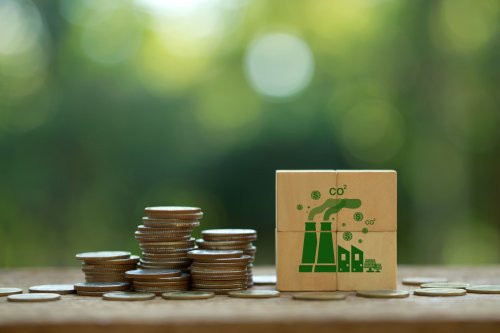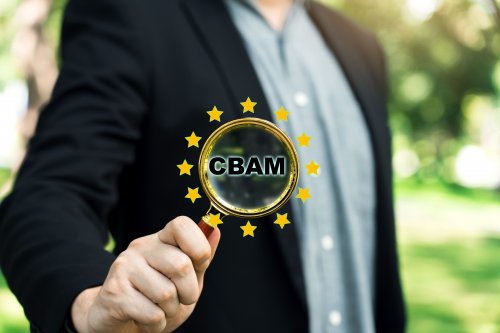In recent weeks, a wide range of companies have faced a number of problems related to the need to report and comply with the requirements of the Cross-Border Carbon Adjustment Mechanism (CBAM).
This became known from an open letter from John W.H. Denton, Secretary General of the International Chamber of Commerce (ICC), to Gerasimos Thomas, Director-General for Taxation and Customs Union of the European Commission.
John W.H. Denton is a global business leader and an expert on the legal issues of international trade and investment. He detailed the obstacles that companies of all sizes and across sectors have faced during the first reporting period of the CBAM transition phase.
The first obstacle was access to the CBAM reporting platform. Many companies were unable to access it due to technical issues. Even those who were able to log on to the platform had difficulties. For example, errors in validating product codes when using default values for direct emissions.
Another inconvenience was that the process of accessing the CBAM reporting platform through national competent authorities varies significantly from one Member State to another, making it difficult to navigate. Also, the CBAM reporting platform is not available in more EU languages. This creates inconvenience for many companies.
The second obstacle was the difficulty in identifying the declarant: it is difficult for companies to figure out who can submit the CBAM report on behalf of the person responsible for the accuracy of the information (the signatory). The instructions for filling out the report do not clearly explain this point.
The third obstacle is that the entry threshold for the CBAM system is too low – only 150 euros. Therefore, even small transactions, such as the sale of screws and bolts, fall under the scope of this mechanism. This primarily leads to disproportionately high administrative costs for compliance, as it is difficult and expensive for small businesses to keep track of and report CO2 emissions from small transactions.
In addition, the very low entry threshold makes irregular shipments much more difficult: businesses that only occasionally send small shipments or samples of value or weight find it difficult and expensive to comply with CBAM requirements.
Entrepreneurs rightly point out that the climate impact of small shipments in terms of weight or value is negligible compared to the bureaucratic burden CBAM creates for international transactions.
The fourth obstacle is the difficulty of collecting the necessary data and the complex and controversial methodology for calculating embedded emissions. Business representatives point out that there is an urgent need to develop clear methodologies for calculating emissions and thus help companies in the EU as well as beyond.
They also call for recognizing the complexity of collecting data on long global supply chains and making the process easier. The installation guide and "communication template" for the CBAM data collection method are too complex for most suppliers.
Although many companies around the world already track and calculate their embedded emissions, they use different methodologies than the CBAM collection method. They can be used only until the end of 2024.
In addition to the complexity of data collection, an additional challenge is that the information required by law is different from the information required to be included in the CBAM Excel spreadsheet. Importers focus on completing this table, while exporters focus on the data required by law.
The fifth obstacle has become a challenge to collect data on CO2 emissions from all participants in the supply chain. It turned out that many suppliers outside the EU do not want to share information and even risk violating national data protection laws. For example, an intermediary company that supplies steel products does not want to disclose information about the original manufacturer of the corresponding product to the buyer.
Businesses point out that it would be expedient to create a mechanism for obtaining the necessary information by the Directorate General for Taxation and Customs Union (DG TAXUD) directly from operators without access to importers' information. Especially for non-European companies, there is a difficulty in determining the volume of imports made in a European country where the company is not established, but registered only for VAT purposes.
Separately, business representatives also raise the issue of protecting confidential business information. The fact is that the type of information that is collected in the importer's Excel spreadsheet reveals confidential business information about the product, the production process and the factors of production that exporters are not willing to share.
Given the short timelines for learning, mastering, and implementing CBAM-compliant reporting, importers have requested to continue using default values throughout the transition period to facilitate the reporting process.
International business is ready for a detailed and constructive dialogue with the European Commission in order to make the CBAM implementation process as convenient and rational as possible for both companies and European institutions, – assured ICC Secretary General John V.H. Denton.
In his opinion, trying to implement such an undeniably necessary climate tool as CBAM without quality preparation can harm the economy and sustainable development.
We see a real risk that CBAM will create an uneven playing field for international trade: this will not only affect the competitiveness of European business through increased administrative burdens and related compliance costs, but will also create long-term risks for the integrity of the single market, he warned ICC Secretary General.
John W.H. Denton and the global business community he represents believe that retaliatory measures by non-EU countries could create additional trade barriers. Countries outside the EU are already beginning to develop their own CBAMs based on a different methodology. In this way, these countries pursue not only climate goals but also protectionist interests. This will further distort global markets. Small businesses are likely to be the most acutely affected.
Given all these obstacles and risks, global business leaders call on EU officials to work together to ensure that the CBAM is aligned with trade policies that promote fair competition and uphold the EU's principles of open and fair trade globally.
Previously, EcoPolitic told in detail what the CBAM mechanism is and how it will affect decarbonization around the world.
You can get a more detailed look at the indicators for calculating emissions in CBAM reports and the algorithm, how it works, in our material.





